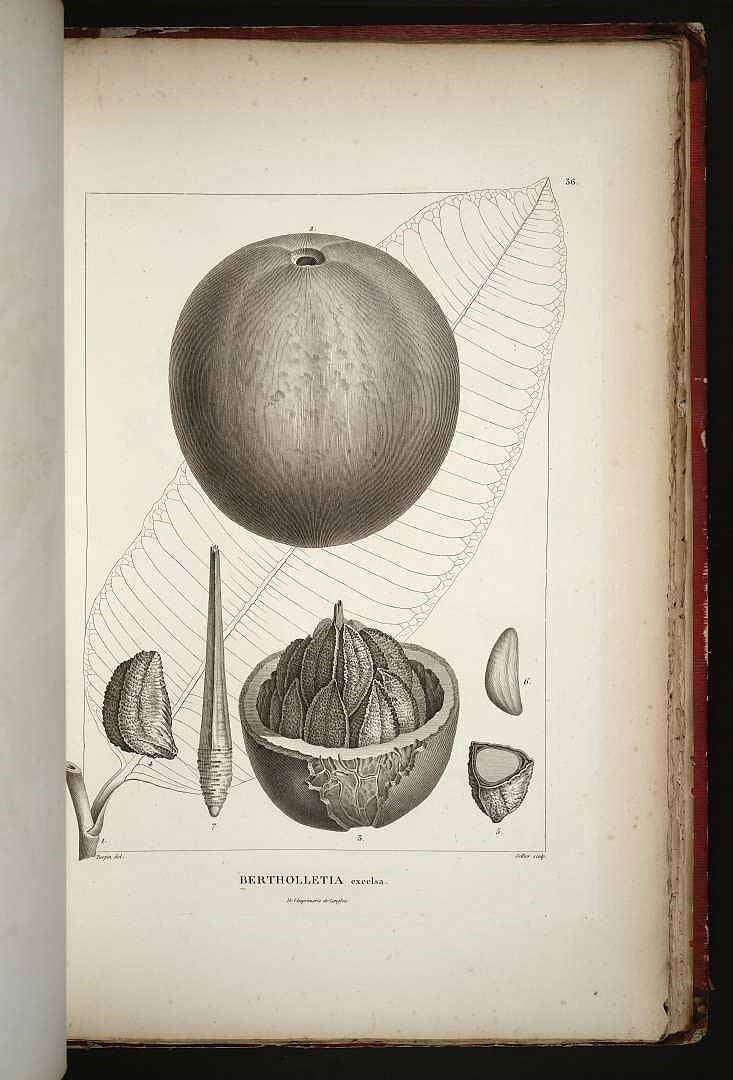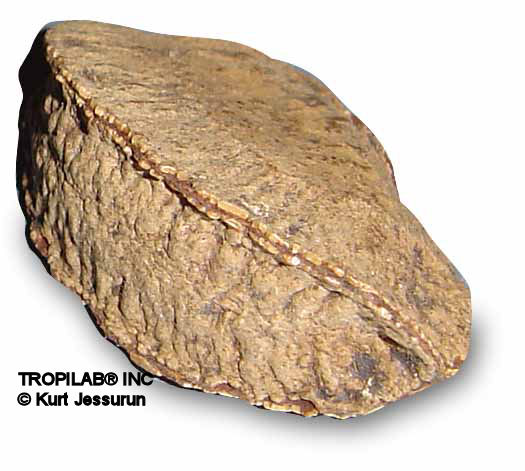 Synonyms
Synonyms
Caryocar tomentosum Willd., Caryocar tuberculosum (Aubl.) Baill., Pekea tuberculosa Aubl.
Common name
Arbre de beurre, butter nut, butter nut of Guiana, castana-de-Brazil, castana-de-para, castanha,
cream nut, ingi noto, noisette indienne, nuez mantequilla, nuez souari, para nut, pekea-nut, porte-noix, sawarri-nut,
souarinussbaum, tata-youba, tata-yuba.
Family
Lecythidaceae (Brazil nut family).
Overview
This is a large evergreen tropical tree, up to 120 feet tall, occurring naturally in
groups in the Amazon rainforest of the Guianas, Venezuela and Brazil.
Para nut tree has leathery leaves that are 2' long.
The fruit, a grayish-brown drupe, can weigh up to 6.6 pounds (3 kg).
The fruits are about 6 inches in diameter, with a hard shell, which containing about 20 angular edible nuts (seeds).
The individual nuts have a somewhat thin shell with the delicious creamy kernel inside; they can be eaten raw or
roasted.
 The extracted oil from the seeds is used in cooking and is commercially used in cosmetics as an emollient
(lubricant on the skin surface).
The extracted oil from the seeds is used in cooking and is commercially used in cosmetics as an emollient
(lubricant on the skin surface).
Suriname’s Traditional Medicine
An infusion of the tree bark is used to treat liver ailments.
Since it has a high natural selenium content, the nut can be used as an antioxidant.
The nuts are also a very good source of vitamin-E (a powerful lipid soluble antioxidant).
|

